EZ-Link
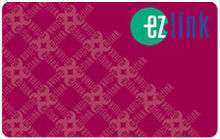 | |
| Location | Singapore |
|---|---|
| Launched | April 2002 |
| Technology | |
| Operator | EZ-Link Pte Ltd |
| Manager | TransitLink |
| Currency | SGD ($0 minimum load, $500 maximum load) |
| Stored-value | EZ-Link Card |
| Credit expiry | None |
| Auto recharge |
EZ-Reload GIRO Auto topup |
| Unlimited use |
EZ-Link Season Pass Adult Monthly Travel Card |
| Validity | |
| Retailed |
|
| Variants |
|
| Website | EZ-Link |
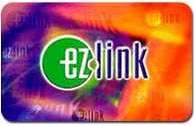
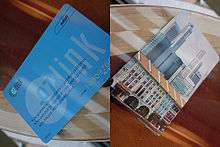
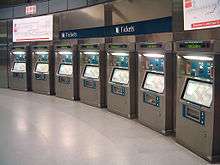
The EZ-Link card is a contactless smart card based on the Sony FeliCa smart card technology and used for the payment of public transportation fares in Singapore, with limited use in the small payments retail sector. Established in 2001, it was promoted as the means for speedier boarding times on buses. It had a monopoly on public transportation fare payments in Singapore until September 2009, when the NETS FlashPay card, which had a monopoly over Electronic Road Pricing toll payments, entered the market for transportation payments (and vice versa). EZ-Link cards are sold, distributed and managed by EZ-Link Pte. Ltd., a subsidiary of Singapore's Land Transport Authority. In September 2009, the new CEPAS EZ-Link card replaced the original EZ-Link card.
Development
The Land Transport Authority (LTA) introduced its pilot testing of the card to 100,000 volunteers on 26 February 2000. Initially for commuters who made at least five trips on MRT/LRT per week, the card was branded as the "Super Rider". As an incentive, volunteers were given 10% rebate off their regular fare during the one-month period.[1]
Two further tests were made, with the scheme extending to frequent bus users on selected routes, on an invitation basis.[2] The S$134.6 million contract was awarded to the ERG Motorola Alliance to supply 5 million cards and readers.
Uses of the card
The card is commonly used in Singapore as a smartcard for paying transportation fees in the city-state's Mass Rapid Transit (MRT), Light Rail Transit (LRT) and public bus services. The card also serves as a supplementary identification and concession card for students in nationally recognised educational institutes, full-time national service personnel serving in the Singapore Armed Forces, Singapore Civil Defence Force and Singapore Police Force or senior citizens who are over sixty years old.
The system has since been expanded, with EZ-Link cards being used for payments in Singapore branches of McDonald's. Some schools in Singapore have also started to adopt the EZ-Link card as a way to mark the attendance of students and to pay for food served within the school campus.
The system is similar to the Octopus card in Hong Kong and Touch 'n Go in Malaysia.
On 3 December 2005, EZ-Link Pte Ltd announced that it was working with NETS to create a new hybrid card which will have the functions of both the EZ-Link card and the CashCard. This card would make it possible for one card to be used for payment on land transport in Singapore — ERP, bus, MRT, stalls and library. Work on this card was expected to be completed in 2008,[3] and it is to replace the existing Ez-Link cards in 2009 as the existing EZ-Link cards are being phased-out.
On 17 October 2007, StarHub and EZ-Link Pte Ltd declared the start of a 6-month trial on phones with an embedded EZ-Link card.[4]
System for e-Payments (SeP)
A trial to test the system was held from 29 August to 28 October 2008. The trial, which involved some 5,000 commuters, generated 1.7 million transactions and has confirmed that the system is ready for revenue service. Developed in-house by the LTA, SeP is built on the Singapore Standard for Contactless ePurse Application (CEPAS) which allows any smart card that complies with the standard to be used with the system and in a wide variety of payment applications.
With SeP, commuters will be able to use cards issued by any card issuer for transit purposes as long as the card complies with the CEPAS standard and includes the transit application. Commuters can eventually use CEPAS-compliant cards for Electronic Road Pricing (ERP) payments in vehicles fitted with the new generation In-vehicle Unit (IU), Electronic Parking System (EPS) carparks and other electronic payment systems that support the CEPAS standard.
Holders of the old EZ-Link card got new CEPAS-compliant cards in a free one-for-one card replacement exercise in 2009. The new EZ-Link cards also have a higher storage capacity of S$500.00 instead of the previous S$100.00 limit.[5]
With the old cards cannot be used from 1 October 2009, faregates and EZ-Link card readers continue to support the old EZ-Link card function, but it will say "INVALID CARD - PLEASE USE CORRECT CARD". The old EZ-link card function is no longer supported on all Downtown Line stations, Circle Line stations (except Stage 3), stations which changed to TITAN faregates and new EZ-Link card readers on buses. There is currently limited support on North East Line, Bukit Panjang LRT, 5 Circle Line stations, Pioneer, Joo Koon, Dover and Expo stations.
Technical data
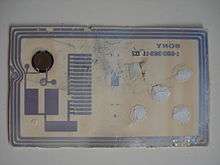
The EZ-Link card operates on a radio frequency (RF) interface of 13.56 MHz at 212 kbit/s, with the potential for communication speeds in excess of 847 kbit/s. It employs the Manchester bit coding scheme for noise tolerance against distance fluctuation between the card and the contactless reader, and implements the Triple DES algorithm for security.
Pricing
An adult EZ-Link card costs S$12, inclusive of a S$5 non-refundable card cost and a S$7 card value.[6][7]
There was a problem with commuters attempting to evade paying the full fare, with the prior magnetic farecard system.
Under the EZ-Link system, when a person taps his card on the entry card reader, the system deducts the maximum fare payable from his bus stop to the end of the bus route. If he taps his card on the exit reader when he disembarks, the system will return an amount based on the remaining bus stages to the end of the bus route. If he fails to tap the card on the exit reader when he disembarks, the entry card reader would have already deducted the maximum fare payable to the end of the bus route.[8]
EZ-Online
EZ-Online is an online service provided by EZ-Link. Commuters are able to view their past transaction records, download discount coupons onto their cards, pay for shopping using the EZ-Link card at selected online merchants, and top up their EZ-Link card online so as long as they own a Sony Felica contactless smart card reader. This is sold at most electronic stores.
EZ-Online is applicable only for purchases not more than SGD$100.[9]
See also
References
- ↑ Karamjit Kaur (25 January 2000). "100,000 commuters needed for smart card test". The Straits Times. p. 33.
- ↑ "Bus pilot test for the Contactless Smart Card" (Press release). SMRT Corporation. 2000.
- ↑ Chua Hian Hou (3 December 2005). "All-in-one travel card for cars, trains and buses". The Straits Times. p. 1.
- ↑ EZ-LINK AND STARHUB CELEBRATE THE LAUNCH OF THEIR NEAR-FIELD COMMUNICATION (NFC) PHONE TRIAL WITH 1,000 HANDSETS DISTRIBUTED TO THEIR CUSTOMERS
- ↑ New Features with CEPAS-compliant EZ-Link Card
- ↑ "EZ-Link FAQs". EZ-Link. Retrieved 22 September 2016.
- ↑ EZ-Link "Where the Cards are Sold"
- ↑ "Useful Tips On Using EZ-Link Card On Buses". Transit Link. 20 May 2005. Retrieved 22 September 2016.
- ↑ "EZ-Online". EZ-Link. Retrieved 23 September 2016.
